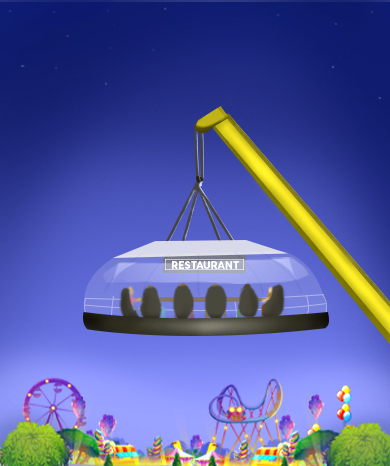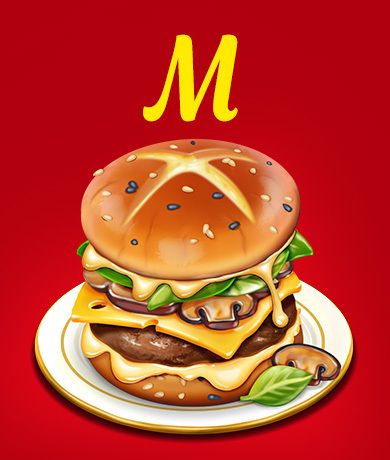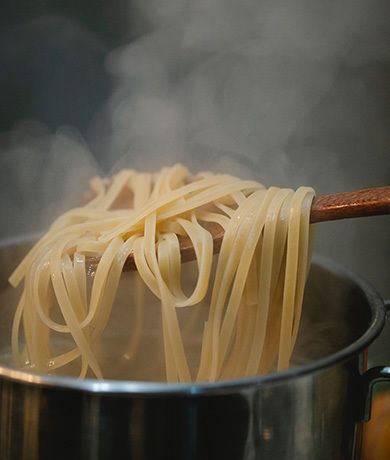Publication date December 20, 2023
7 Bizarre Foods People Consumed to Survive World War II

Out of all the great sacrifices people made during World War II, I bet you didn’t think about what the public included in their diet. Of course not, because you mister, are privileged with your inexistence during World War II. 😉
The military tier folks consumed the best of rationing while the remaining had to tighten their belt and accept the leftovers. But unlike the millennials, the Greatest Generation (yes, it’s the term used to describe people who grew up amidst World War II) did not crib about what was put on their plate, but instead got creative with it!
From inventing unconventional loaves of bread in America to eating barley all day every day in Poland, let’s dig into a list of seven weird disaster delicacies people relished during World War II.
Braised Beef Tongue
When you think of your favorite recipes to enjoy with your family, I’m sure something big and rubbery does not top the list. During the deadly times, accessing edible meat of normal standards was a big challenge, and hence meat lovers resorted to consuming beef tongues and feet.
Of course, the tongue was not served as the big rubbery ugly thing that it is but was presented in the form of a casserole. The tongue would be cooked for two straight hours to attain a normal consistency. If you’re still not grasping the amount of desperation, imagine taking a bite of your fleshy tongue, but 10 times more rubbery… yep, now you know!
Bean Cake
Oh, I can’t even begin to express how easy we have it with yummy food at a snap of our fingers. In Poland, flour was really scarce. So, the Polish geniuses used beans to bake cakes. Beans have completely contrasting qualities to flour but when they are boiled to great extents, and minced to a smoother consistency, they turn out to be malleable and can be molded into a cake.
This should be the true story behind the existence of magic beans we learn in school – the time.
Roosevelt Coffee
If you can’t get through your 9-to-5 job without gallons of caffeine flowing in your system, imagine being in the middle of a war without your quick daily dose of coffee. Coffee beans were heavily shipped overseas from America, resulting in scarcity for the locals. It’s believed that Americans survived on less than one cup of coffee per day.
But the true coffee addicts took an alternative route where they invented something called Roosevelt coffee, of course, named after the president.
The primary ingredients to this were posted and chicory. Postum is basically a mixture of wheat, molasses, and wheat bran that substituted coffee beans, while chicory added spice to the unconventional drink. Isn’t it true what they say? Necessity is indeed the mother of invention. 😉
Sponge Cake amidst the War
Sponge cake is a supreme delicacy impressing generations of people from the renaissance era – the key ingredients being eggs, flour, butter, and sugar.
The soldiers relied on these very ingredients which means the grocery stores often lacked the same. Of course, the bakers took it upon themselves to bake the world a better place regardless of the inventory they had at their disposal. Enter on cue – the welsh version of the infamous sponge cake. Here, eggs were substituted with lots of milk, syrup, and margarine. It did affect the fluffiness of the cake, but the folks back then worked their way around it anyway. Any cake is better than no cake, right?
Sour Cream from Potato Flour
Unfortunately, eighteen percent of the Polish population did not make it past World War II. While Germans overtook the Polish lands, the Polish cuisine and culture were hanging by a thread with depleting ration everywhere.
During these desperate times, an awkward delicacy along the lines of Potato flour sour cream came into existence as people struggled to make do with what little ingredients they had left. They mixed potato flour and sugar and whopped it till it gave a creamy consistency. This particular sour cream was a unique hit and was served popularly alongside blueberry dumplings – the dish soon took its position as ‘children’s favorite go-to meal’.
Fish fillets without the fish
This one takes the cake – the welsh sponge one without the eggs! The English cooks showed brilliant resilience during these tough times by coming up with a creative way to cook fish without the fish. They mixed rice with eggs to craft a mixture in a frying pan of fried rice, and cut it into fillets once the mixture cooled down. It blows my mind how this was a substitute for fish, but it was, and a very good one at that.
Don’t mess with an Englishman’s fish, they’ll make fake ones and you may not know the difference!
Bubble and Squeak was the OG
Food rationing meant leftovers are not really leftovers. Everything was put to some use by mixing the leftovers left and right and making a happy meal out of it. There was no right way to mix it, you just…well mix it together. The potato was one such ingredient that never ran out of stock – and was a hero of the leftover department due to its impressionable taste of whatever it’s mixed with. Various kinds of potatoes – mashed, smashed, scrambled, assembled – were served over dinners.
Chopped Liver
Surprisingly, chopped liver is a traditional Jewish dish that uses schmaltz and gribenes, chicken fat, and cracklings to fortify the chopped liver that makes up most of the dish. During World War II, Jewish families were told to stretch out their food rations, which might mean they were also using breadcrumbs to increase the amount of meals or making a vegetarian version. Their vegetarian version however doesn’t sound so odd as the dish made use of fresh fruits and vegetables and whatever was growing in victory gardens. The home chefs at that time swapped out the meat for green beans, peas, opinions, hard-boiled eggs which were not actually easy to get, and crackers.
Onions Stuffed With Grape-Nuts
During WWII there were plentiful vegetables in America. Fresh fruit and vegetables were impossible to ship overseas without spoiling so Americans were told to fill up on them. Onions were super easy to grow and extremely hardy, and in the 1940s, cooks started stuffing them with several types of ingredients. You’ll be surprised to know that Grape-Nut doesn't contain neither grapes nor nuts, but is made from wheat and barley was an American staple at the time. Although many people considered the cereal tasteless, it gave a stuffed onion a consistency similar to an onion stuffed with ground beef. There is no doubt that this dish seems weird but with the right amount of spices, this dish might even make a tasty appetizer today.
10. Bread Fortified With Sawdust
Bread with sawdust, can you imagine having one? During World War II people living in England and Germany didn’t have the vast fields of wheat America enjoyed, so they mixed what little they had with sawdust, many people also known as “tree flower”. Don’t be shocked but some people even claimed it was nutritionally beneficial. Moreover, one German dish for “black bread” called for half rye grain, two parts sliced beets, two parts sawdust, and one part “minced leaves and straw." And then everything was mixed in one and baked like normal.
We may not be able to grasp the lengths of desperation The Greatest Generation went through to access edible food, which we so easily take for granted by ordering it with a snap of our fingers. But this is an ode to the last generation of real survivors (hopefully) who know war in its true sense and not through over-the-top video games.
Frequently Asked Questions
Q. What was the World War diet?
In 1940, rationing was introduced and lasted 14 years. For most of the time cheese, meat, butter, cooking fats, and sugar were heavily restricted, but potatoes, along with other root vegetables and bread were freely available. That’s why during the World War people ate a diet much higher in carbohydrates and lower in fats.
Q. What did children eat in World War 2?
During World War 2, children’s rations were slightly different from adults. Children were allowed extra food that was considered essential for healthy growth, such as milk and orange juice. The National Milk scheme offered one pint of milk for every child under 5 years old. Fruit and vegetables were not rationed for children but were in short supply.
Q. What foods were not available in WW2?
When World War II started in September 1939, petrol was the first thing to be controlled. Later on 8 January 1940, bacon, butter, and sugar were rationed. Meat, jam, tea, biscuits, breakfast cereals, cheese, eggs, milk, lard, canned and dried fruit were rationed afterward, though not all at once.
Q. What did people eat for breakfast in the 1930s?
The 1930s were a time of economic hardship for many so as a result breakfast was often simple and practical. However certain foods did gain notable popularity during the decade including:
- Cereal
- Jell O
- Peanut Butter
- Spam
- Biscuits and Gravy
- Coffee
- Toast
Also Read:
How to Make a Perfect Tartine for Your Next Brunch Party
Filipino Adobo With its Tangy and Sweet Flavour is Taking Over the World




